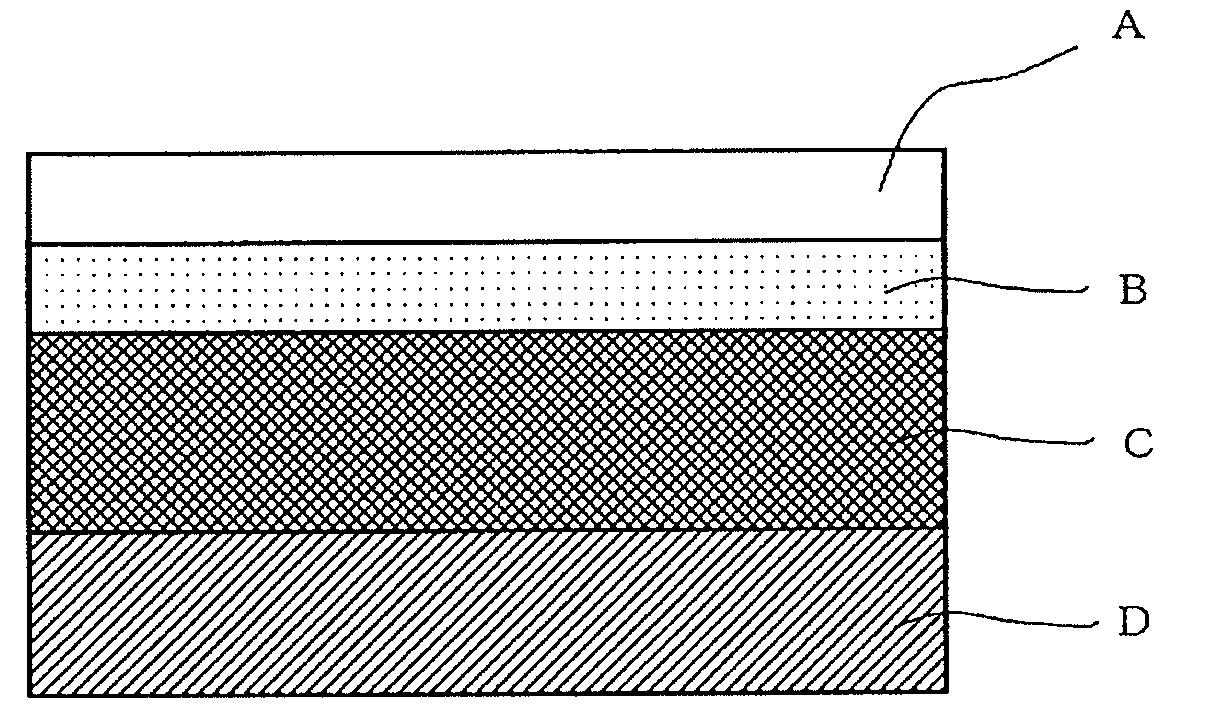High-gloss multilayer plastic container
a multi-layer, plastic container technology, applied in the direction of transportation and packaging, other domestic articles, synthetic resin layered products, etc., can solve the problems of inability to realize a multi-layer plastic container having an excellent external appearance, color failure such as the production of stripe-like patterns, grain patterns or ripple patterns, etc., to achieve the effect of even metallic color ton
- Summary
- Abstract
- Description
- Claims
- Application Information
AI Technical Summary
Benefits of technology
Problems solved by technology
Method used
Image
Examples
example 1
[0068]The extruder A having an aperture of 40 mm was loaded with a transparent, amorphous, cyclohexanedimethanol (CHDM)-based copolymer polyethylene terephthalate resin having an intrinsic viscosity of 0.7 (dl / g), a shearing stress of 190 (KPa), and a water content of 600 ppm. The extruder B having an aperture of 40 mm was loaded with a transparent, colorless, low-density polyethylene (LDPE)-based resin of a tackifier-added type containing an olefin-based elastomer and having an MFR of 1.5 (g / 10 min) and a shearing stress of 90 (KPa). The extruder C having an aperture of 50 mm was loaded with a transparent, colorless propylene / ethylene block copolymer resin having an MFR of 0.8 and a shearing stress of 120 (KPa), 0.5 wt % of a pearl red (mica-based pigment having an average particle diameter of 21 μm) as a luster pigment, and 0.5 wt % of an azo-based red pigment as a coloring pigment. The extruder D having an aperture of 40 mm was loaded with the ethylene / propylene block copolymer r...
example 2
[0070]A similar hollow bottle was obtained in the same manner as in Example 1 except that a transparent, colorless, LDPE-based resin of a tackifier-added type containing a styrene-based elastomer and having an MFR of 1.5 (g / 10 min) and a shearing stress of 70 (KPa) was used in the transparent adhesive resin layer B in Example 1.
[0071]The thickness of each layer of the bottle was as follows: the thickness of the outer layer A was 50 μm, the thickness of the transparent adhesive resin layer B was 70 μm, the thickness of the colored polyolefin-based resin layer C containing a luster pigment was 710 μm, and the thickness of the colored polyolefin-based resin layer D was 170 μm. In addition, the bottle had a surface roughness Ra of 0.10 μm, the concavoconvex level of an interface between the transparent polyester-based resin outer layer A and the transparent adhesive resin layer B was 10 μm, the concavoconvex level of an interface between the transparent adhesive resin layer B and the co...
example 3
[0072]A similar hollow bottle was obtained in the same manner as in Example 1 except that a transparent, colorless, LDPE-based resin of a tackifier-added type containing an olefin-based elastomer and having an MFR of 2.5 (g / 10 min) and a shearing stress of 65 (KPa) was used in the transparent adhesive resin layer B in Example 1.
[0073]The thickness of each layer of the bottle was as follows: the thickness of the outer layer A was 50 μm, the thickness of the transparent adhesive resin layer B was 70 μm, the thickness of the colored polyolefin-based resin layer C containing a luster pigment was 710 μm, and the thickness of the colored polyolefin-based resin layer D was 170 μm. In addition, the bottle had a surface roughness Ra of 0.17 μm, the concavoconvex level of an interface between the transparent polyester-based resin outer layer A and the transparent adhesive resin layer B was 10 μm, the concavoconvex level of an interface between the transparent adhesive resin layer B and the co...
PUM
| Property | Measurement | Unit |
|---|---|---|
| surface roughness Ra | aaaaa | aaaaa |
| total thickness | aaaaa | aaaaa |
| surface roughness | aaaaa | aaaaa |
Abstract
Description
Claims
Application Information
 Login to View More
Login to View More - R&D
- Intellectual Property
- Life Sciences
- Materials
- Tech Scout
- Unparalleled Data Quality
- Higher Quality Content
- 60% Fewer Hallucinations
Browse by: Latest US Patents, China's latest patents, Technical Efficacy Thesaurus, Application Domain, Technology Topic, Popular Technical Reports.
© 2025 PatSnap. All rights reserved.Legal|Privacy policy|Modern Slavery Act Transparency Statement|Sitemap|About US| Contact US: help@patsnap.com


